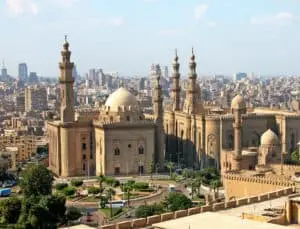Pottery and Patterns: Unravelling Folklore’s Influence on Irish Craftsmanship

Updated On: April 22, 2024 by Yasmin Elwan
In exploring the rich tapestry of Irish craftsmanship, one cannot help but recognise the thread of folklore intricately woven into its cultural fabric. Ireland’s storied past serves as an inexhaustible reservoir of inspiration for its artisans, who channel the myths and tales of old into their skilled work. From pottery to textiles, each crafted piece is an echo of tradition, suffused with symbols and patterns that connect the present to a time of mythic heroes and mystical lands.

Traditions in craftsmanship are preserved through the generations, as evident in the continuity of methods and aesthetics seen in Irish craft. The ancient art of pottery, for example, has been kept alive, adapting through the centuries but always holding at its core the essence of Irish heritage. These artefacts are more than mere objects; they are narrators of Ireland’s folklore, capturing the imagination with each curve and contour shaped by the hands of masterful artisans.
The History of Irish Craftsmanship

As we explore the rich tapestry of Irish craft, it is essential to understand its origins and growth through various historical periods. From the early Neolithic beginnings to the influence of various settlers and the changes brought about by the Industrial Revolution, Irish craftsmanship tells a story deeply embedded in the cultural heritage of Ireland.
Neolithic Beginnings and Historical Evolution
Ireland’s tradition of pottery dates back approximately 6,000 years, originating during the Neolithic period. The earliest pottery was typically fashioned from local clay and used for various domestic purposes. Throughout the Bronze Age, this craft evolved, with increased skill and more intricate designs becoming prevalent as artisans drew from the natural landscape and societal changes of the era.
Influence of Ancient Settlements and Anglo-Normans
By the 12th century, the arrival of the Anglo-Normans in Ireland further shaped the local crafts, introducing new methods and styles that blended with the indigenous practices. This melding of cultures continued to enrich the 18th-century Irish craft scene, ensuring that each piece not only held functional value but also carried the weight of Ireland’s cultural heritage.
Craftsmanship During the Industrial Revolution
The Industrial Revolution introduced significant changes to the landscape of Irish craft. Although faced with mass production, traditional Irish artisans persisted, adapting to new materials and techniques while retaining the essence of the cultural heritage of Ireland. This period saw many traditional crafts either decline or transform, laying the foundation for contemporary appreciation and revival of authentic Irish craftsmanship.
Striking the delicate balance between tradition and innovation, these periods highlight the resilience and adaptability of Irish craft. Our cultural heritage remains vibrantly alive through the continuous practice of these time-honoured skills.
Traditional Irish Pottery
In our exploration of Irish craftsmanship, traditional Irish pottery emerges as a testament to the country’s rich cultural heritage, offering everything from everyday earthenware to the delicate porcelain of Belleek Pottery in County Fermanagh.
Pottery Making Techniques
The art of Irish pottery involves various techniques, central to which is the use of local stone and clay. One begins by sourcing the native materials, which are then shaped on a potter’s wheel or hand-formed using coiling or slab techniques. The formed items are subjected to a high-temperature firing process, transforming them into durable ceramics.
Prominent Types and Uses
Irish pottery is known not only for its beauty but also for its utility. The most common types include earthenware, which is often glazed and used in cookware, and porcelain, which is noted for its fine quality and is used in more delicate items. Belleek Pottery is famed for its thin-walled porcelain featuring intricate basketweave patterns and motifs inspired by Irish folklore.
Regional Pottery Styles
The pottery styles can vary significantly by region. County Fermanagh, for instance, is celebrated for its production of Belleek Pottery, discernible by its distinctive ivory-toned porcelain. Meanwhile, other regions might be characterised by more robust earthenware adorned with local motifs that echo the Irish landscape and tales of yesteryear.
Irish Textiles and Fabrics

In this section, we delve into the rich heritage of Irish textiles. Examining the processes of spinning and weaving that produce the esteemed Irish linen and the meticulous craftsmanship behind Irish lace, we uncover the tradition interwoven with Irish culture.
Irish Linen: Spinning and Weaving
Irish linen, known for its quality and durability, is a prestigious textile that has been produced in Ireland for centuries. This luxurious fabric begins its journey as the flax plant, which undergoes a laborious process to transform into the linen we know. Spinning the extracted flax fibres into yarn and weaving them into textiles are skills that have been passed down through generations of Irish craftspeople. Once a staple of the Irish economy, linen remains a symbol of national pride and a mainstay in both traditional and contemporary Irish clothing.
The Tradition of Irish Lace
Irish lace is celebrated for its delicacy and complex patterns, with each stitch telling a story of bygone days. The making of Irish lace involves intricate needlework, often incorporating motifs inspired by Irish folklore. Historically, this craft provided not just an artistic outlet but also an essential means of income for many Irish families. The meticulous art of lace-making demands an unparalleled level of skill, with materials such as fine yarn being manipulated into beautiful designs, creating textiles that have adorned everything from everyday apparel to royal garments.
Cultural Motifs in Irish Folklore

In exploring the rich tapestry of Irish folklore, certain cultural motifs stand out. These symbols and designs are deeply embedded in the nation’s crafts, conveying stories and beliefs that have been passed down through generations.
Symbolic Patterns and Designs
The shamrock, with its three leaves, is one of Ireland’s most iconic motifs. Often found in pottery and other crafts, this simple plant represents not only nature but also has connotations of religious significance, symbolising the Holy Trinity for some. Celtic knots are another common pattern, characterising Irish craftsmanship with their intricate, interlocking lines. These knots often embody the concept of eternity, with no definitive start or end point. They were typically carved into stone, metal, and woodwork and are abundantly seen in traditional Irish jewellery.
In textiles, Aran sweaters showcase complex patterns, including cables, diamonds, and basket stitches. Each stitch is believed to carry its own unique meaning, from the diamond representing wealth and success to the basket signifying the hope for a plentiful catch.
Mythological Inspiration and Beliefs
Mythology and folklore in Ireland have a profound influence on local craftsmanship, particularly in incorporating elements of mythology into decorative motifs. Depictions of fairies, like the Banshee, have imbued crafts with a sense of the ethereal and otherworldly. These aspects of mythology are not only decorative; they often embody warnings and folk wisdom that reflect the beliefs and superstitions of the Irish people.
Natural elements are profoundly represented, with motifs of flowers and leaves symbolising the deep connection between Irish culture and its natural landscape. This symbiosis between man-made art and natural beauty can be observed in how natural patterns are seamlessly woven into the fabric of Irish crafts.
Exploring these motifs immerses us in tales of Irish mythology and brings an understanding of how folklore shapes the country’s artistic legacy.
Leather and Woodwork in Irish Craft

Leather and woodwork are tactile testimonies of Irish heritage, embedded with centuries of tradition and skill. In our exploration, we uncover the resilient nature of leather in Irish crafts and the intricate expressions of wood craftsmanship that narrate stories of Ireland’s cultural landscape.
Durability of Leather in Traditional Crafts
Leather has been a cornerstone in Irish crafting, prized for its robustness and versatility. Artisans have long cultivated techniques to transform hides into durable goods, ranging from iconic pampooties to contemporary leather bags. The tanning processes perfected over generations ensure that each piece withstands the test of time, marrying functionality with ageless elegance.
Expressions of Wood craftsmanship
Irish woodwork is a craft of legacy, with hazel, heather, and willow shaping the framework of traditional designs. Our craftsmen’s adept hands turn these renewable resources into masterpieces—from musical instruments to bespoke furniture. Woodworking in Ireland is not merely a craft; it’s a form of storytelling where each grain and texture embodies a part of our shared narrative.
Firing Methods and Kiln Innovations
In tracing the lineage of Irish pottery, we find that the heart of this transformation lies in the firing and the kilns themselves – tools and processes central to the art that have seen significant change.
Evolution of Firing Techniques
We’ve witnessed an extraordinary shift in firing techniques over the centuries. Initially, Irish potters utilised open fires to harden their creations, a process heavily influenced by the surrounding folklore, which often imbued the vessels with a sense of story and place. As our understanding of materials and heat developed, so too did our kilns. The introduction of kilns offered a more controlled environment, essential to achieving a consistent finish on the pottery. These advancements allowed not only for the improvement in quality but also for the safe exploration of new glazing techniques and better structural integrity of the pieces we cherished.
Contemporary Approaches and Materials
Today, our approach to pottery-making marries tradition with innovation. State-of-the-art kilns with sophisticated temperature controls and customisable settings have become the norm. These technological innovations provide us with the capability to experiment with a variety of firing methods, such as the celebrated saggar firing, which enables us to create stunning surface effects that echo the rich tapestry of Irish folklore. The materials used have also evolved, with a focus on eco-friendly options and energy efficiency, contributing to a sustainable craft practice that honours our heritage while looking forward to the future.
Decorative Arts and Lifestyle Influence

In Ireland, the decorative arts are not just aesthetic embellishments but are intertwined with lifestyle and cultural identity. They serve as symbols of tradition and resilience, reflecting the nation’s history and values in tangible forms.
Decoration in Everyday Life and Special Occasions
The practice of pottery in Ireland is as versatile as it is historical, seamlessly fitting into both daily life and the celebrations of special occasions. Each piece, whether it’s a simple mug or an elaborate centrepiece, showcases intricate designs that often draw from nature. These items are utilised in homes not just for their functionality but also to add a touch of Irish folklore to the décor. It is commonplace to find pottery in Irish households that have been passed down through generations, becoming a part of family traditions.
Craft as a Reflection of Irish Identity and Resilience
The craft of pottery goes beyond mere decoration; it is a reflection of cultural identity and the resilience of the Irish people. The patterns and motifs etched into Irish pottery often tell stories of the land, legends, or the struggles that have shaped the nation. This storytelling through craft has upheld Ireland’s rich heritage and has become a source of pride and connection for the Irish both at home and abroad. Such crafts highlight the enduring spirit and creativity that characterize Ireland’s cultural landscape.
Museum Collections and Public Exhibits
As custodians of Irish heritage, we recognise the vital role museum collections and public exhibits play in preserving and showcasing the rich tapestry of Ireland’s craftsmanship traditions.
Conservation of Heritage Crafts
Museums have long stood as guardians of regional and national heritage. They act as repositories, housing significant collections that span the intricate craft of pottery to the fine detail of textile work produced by the skilled craftsmen in rural Ireland. Our efforts ensure that these timeless pieces are conserved, allowing future generations to appreciate the tangible links to our past. Within these walls, heritage crafts are not merely displays; they symbolise our continuous commitment to protecting our cultural identity.
Learning from Exhibitions and Workshops
Public exhibits and workshops serve as educational platforms, providing immersive experiences that directly engage with the community. Through carefully curated exhibitions within museums and public spaces such as squares and libraries, we educate visitors on the significance and evolution of Irish craftsmanship. Workshops, often led by experts or even the artisans themselves, offer hands-on opportunities, imparting practical skills and knowledge about heritage craft. These educational encounters are important touchpoints, cultivating both respect for the tradition and sparking interest in learning the crafts.
The Role of Nature in Irish Craft

Within the realm of Irish craftsmanship, nature plays an instrumental role, providing both materials and inspiration. Our connection to the natural world is deeply rooted in traditional practices, particularly within rural Ireland and remote areas like the Aran Islands.
Sourcing from the Natural World
In sourcing our materials, we turn to the very essence of the natural world. Rural Ireland offers a bounty of resources, where the purest forms of clay, wood, and plant fibres are found. The process of gathering these natural elements is imbued with a sense of respect and sustainability. Our artisans carefully select materials that not only serve their creative vision but also bear the mark of the Irish landscape. It’s a sustainable loop where what is taken is replaced, ensuring the balance of nature remains undisturbed.
- Materials Sourced:
- Clay: Extracted from the rich Irish earth, it’s the lifeline of our pottery.
- Wood: Harvested from our thriving forests, it is used in sculpting.
- Plant Fibres: Gleaned from flax and wool-bearing animals, they are woven into the fabric of our crafts.
Artistic Expression and Sustainability
Our artistic expression flows directly from these natural gifts. Each piece of pottery or patterned textile tells a story of the natural world, from the wild coastlines to the intricate weaves reflecting the interlacing branches of our ancient oaks. In maintaining this deep connection to nature, we embody sustainability. Our crafts do not simply take; they honour and preserve, much like the stories passed down through generations. In every crafted bowl or woven sweater, a piece of the Irish environment lives on, fostering a legacy that respects the past while looking towards a future where both craft and nature thrive side by side.
- Values in Craftsmanship:
- Honouring Nature: Each creation is a homage to the environment that provided for it.
- Preserving Tradition: We uphold techniques that have minimal impact and align with ethical stewardship.
- Educating for the Future: By intertwining craftsmanship with an ethos of care, we teach valuable lessons in sustainable living.
Innovations and Future Directions

As we delve into Irish craftsmanship, we recognise the pivotal role innovation and fresh ideas play in the transformation and longevity of traditional crafts.
Technological Impact on Traditional Techniques
Advancements in technology have significantly altered how we approach and enhance traditional Irish pottery. Artisans now have access to 3D printing and digital modelling tools, which allow for the precise replication of intricate patterns and shapes once only possible by the most skilled craftsmen. Such technologies enable us to experiment with designs before they are brought to life through clay, marrying the old with the new in a dance of digital and physical artistry.
Fostering Creativity and New Talents
To ensure the survival and evolution of our rich craft heritage, nurturing the next generation of artisans is essential. Educational programmes and craft workshops have been fundamental in igniting a passion for pottery in young creatives. Supporting these up-and-coming talents with mentorship opportunities that bridge traditional expertise with contemporary artistic expression is crucial. We see a surge in innovative ideas emerging from a blend of time-honoured techniques and fresh perspectives, ensuring that Irish craftsmanship continues to thrive and transform.
Frequently Asked Questions

In this section, we address some of the most common queries people have regarding the influence of folklore on Irish pottery and crafts. Each question touches on a different aspect of the rich tradition that defines Irish craftsmanship.
How has folklore influenced Irish pottery designs?
Folklore has deeply influenced Irish pottery designs, often incorporating symbols and narratives from mythical tales into the ceramic artwork. This link between folklore and the artistic process is evident in patterns that reflect stories and traditions passed down through generations.
What distinguishes Irish pottery from other pottery traditions?
Irish pottery is distinct in its use of local materials and traditional techniques passed down through families and communities. The elegant patterns of Belleek Pottery, for example, showcase a fine craftsmanship that’s unique to Ireland’s cultural and historical context.
Can you outline the history of traditional Irish crafts?
The history of traditional Irish crafts is long and storied, shaping the nation’s culture significantly. Crafts like Irish Lace and Aran Sweaters have roots in daily life but have become emblematic of Irish heritage and skill.
What are some characteristic patterns found in Irish folk art?
Characteristic patterns in Irish folk art often include intricate knots, spirals, and interlacing derived from ancient Celtic symbols. These designs are frequently seen in items such as Celtic jewelry and handwoven textiles, reflecting Ireland’s artistic heritage.
Which types of crafts are traditionally made by adults in Ireland?
In Ireland, adults traditionally engage in a variety of crafts such as basket weaving, pottery, textile crafts like tweed production, and woodworking. These crafts are not only forms of expression but also serve practical purposes in everyday life.
How is Irish Lace incorporated into contemporary Irish craft?
Irish Lace continues to hold a place in contemporary Irish craft, finding new life in modern fashion and home décor. Its intricate patterns and fine workmanship make it a prized element in both traditional and modern designs, symbolising a connection with Ireland’s artistic past while evolving with current trends.






